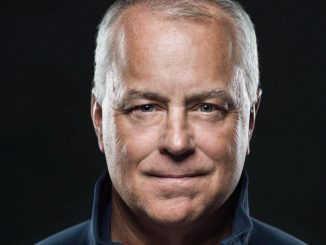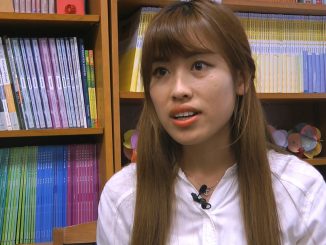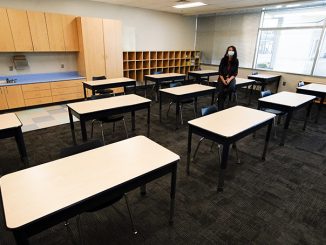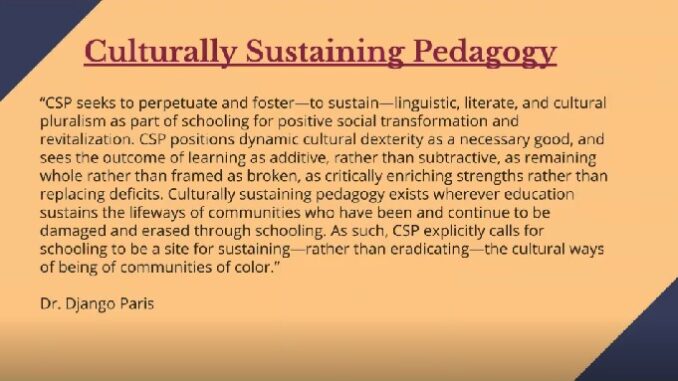
RALEIGH — “Experiencing discomfort” and “leaning in” to an “antiracist approach” to teaching are part of the Critical Race Theory-themed training teachers in North Carolina’s largest district have been receiving.
Critical Race Theory (CRT) is the belief that all facets of society, people, and history are inherently racist and some supporters of CRT argue resolution of such racism is impossible. CRT is based on Marxist Critical Theory, which divides all aspects of society into two groups, oppressed and oppressors. CRT adapts Critical Theory using a racial lens, with whites being the oppressors and all minorities the oppressed.
In a previous report, audio and video obtained by North State Journal revealed Critical Race Theory-themed professional development training conducted by the district’s Office of Equity Affairs staff. Those staff members include Special Assistant Christina Spears and Director of Equity Affairs Teresa Bunner.
The “antibias” training sessions conducted by the Office of Equity Affairs (OEA) in the Wake County Public Schools (WCPSS) discussed how to build on “culturally responsive” and “antiracist” curriculum.
The sessions also included four “agreements,” which were detailed by Spears. She also described the use of a “Compass” for staying “morally, emotionally, intellectually, relationally engaged” in the conversation on topics like “experiencing discomfort,” “speaking your truth,” and “non-closure.”
On the topic of “experiencing discomfort,” Spears defined it as a “willingness to take risk to deal with the reality of race and racism, particularly as it relates to teaching and learning toward an antiracist approach.”
“So, we’re going to ask you to lean into discomfort during our learning times together,” Spears told the teachers and staff involved in the session.
Participants in the antibias training were sent off to “small groups” where they were to discuss a presentation slide titled, “Working Toward an Antiracist Approach.” The slide contained five concepts: Multicultural Education, Culturally Responsive Pedagogy, Culturally Sustaining Pedagogies, Anti-Bias and Anti-Racist.
At the conclusion of the small group sessions, Spears and Bunner took turns directing the training and named individuals responsible for some of the discussion topics, like “multicultural education,” which Bunner attributed a “deeper understanding of” to Dr. James Banks.
Banks is known as the “father of multicultural education” and for outlining its five dimensions. Over time, Banks’ “multicultural education” has been adapted and expanded on through the incorporation of social justice and Critical Race Theory themes.
Culturally Responsive Pedagogy
Pedagogy, as defined by the Oxford dictionary, is the “method and practice of teaching, especially as an academic subject or theoretical concept.” The original intent of “Culturally Responsive Pedagogy” was for teachers to have a better understanding of the students in their charge, including understanding their backgrounds and cultural similarities and differences.
With regard to “culturally responsive pedagogy, Spears brought up the work of Dr. Gloria Ladson-Billings. The work of Ladson-Billings focuses mainly on how CRT can be applied in elementary and early childhood education settings.
Ladson-Billings wrote about CRT applications in education in her 1998 paper, “Just what is critical race theory and what’s it doing in a nice field like education?” In that paper, she writes that “Critical race theory sees the official school curriculum as a culturally specific artifact designed to maintain a White supremacist master script.” Ladson-Billings goes on to say that “This master scripting means stories of African Americans are muted and erased when they challenge dominant culture authority and power.”
Ladson-Billings also argued that according to CRT, classroom instruction assumed Black students are “deficient” and testing grants whites “power” because they achieve higher scores. She also doubted CRT would “go very far into the mainstream” and CRT in education would “likely to become the “darling” of the radical left.”
Bunner’s comments regarding “culturally sustaining pedagogy” were directed at work produced by Dr. Django Paris. Paris was a student of Ladson-Billings and his efforts build on work and concepts by Ladson-Billings.
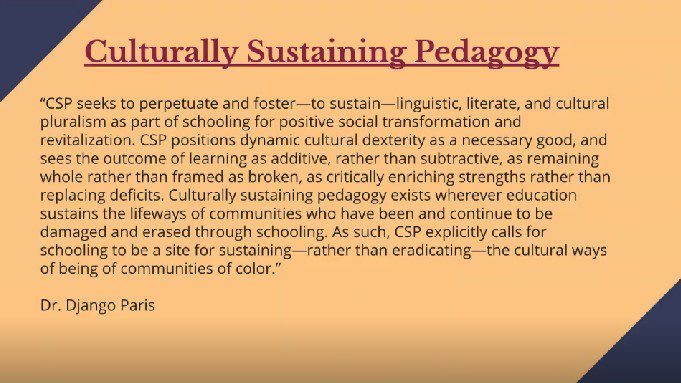
“So, if you just look at that first… “culturally sustaining pedagogy” seeks to perpetuate and foster to sustain linguistic literate and cultural pluralism as a part of schooling for positive school transformation and revitalization,” Bunner said while reading a presentation slide. “That’s a big sentence right there.”
She went on to say “Dr. Paris argues that it’s not enough just to create space where it’s okay for students to come in as their cultural selves, but we have to create space that honors and builds on that and sustains who each individual is as a cultural being into the space.”
This explanation of Paris’ idea for creating such spaces and culturally sustaining pedagogy arguably has roots in segregation and segregating student achievement. In 2014, Paris co-penned an article on the Harvard Education Publishing Group website titled, “Beyond the White Gaze.”
In that article, Paris asserts that there should be separate teaching pedagogies for “students of color” and that those students should not be measured against “White, middle-class norms that continue to dominate notions of educational achievement.”
“Making sure the white gaze isn’t the dominant one in teaching and learning takes us to the edge of approaches to teaching that reposition the cultural practices of communities of color as assets, rather than deficits, in classroom learning (known as asset pedagogies),” Paris wrote. “It is at this edge that we offer culturally sustaining pedagogy (CSP) as a needed way forward in the face of continued pervasive assimilationist, antidemocratic educational practices and policies.”
Wake County’s “Culturally Responsive Framework”
Spears’ earlier mention of Ladson-Billings eventually segued to the WCPSS “culturally responsive framework” and a graphic of a triangle representing that framework.
Spears said that the framework was “borne out of the work of Gloria Ladson-Billings,” and has three components: Academic Achievement, Develop/Maintain Cultural Integrity, and Critical Consciousness.
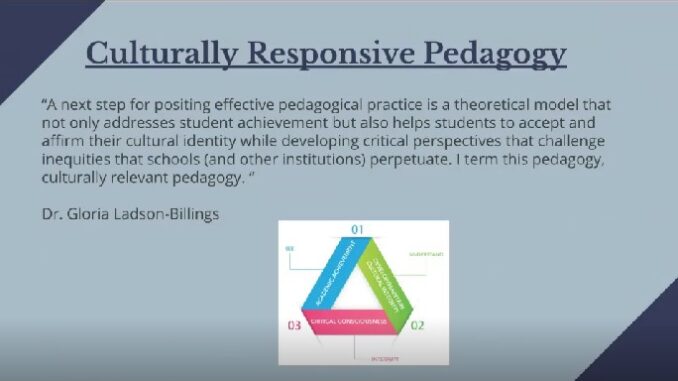
Spears’ description of the framework during the training was brief, however, 2018 and 2019 OEA “equity” documents obtained by North State Journal bring more context into view.
The OEA’s 2018 Equity Leadership and Support Guide states that the “WCPSS Equity Leadership Framework provides the theoretical and content basis for advancing equity work in schools and classrooms,” and that the framework is “constructed around five focus areas: Courageous Conversations, Color Consciousness, Identity Development, Culturally Relevant Teaching, and Examining Privilege.”
The diagram (below) is the 2019 representation of the WCPSS Cultural Responsiveness Framework. Verbs places along those three components include “See,” “Understand” and “interrupt.”

Spears said these verbs were added by Trice “as a way to start to put each of those things unto practice,” presumably, in the classroom. Her description of the framework during the training was brief, however, 2018 and 2019 OEA “equity” documents obtained by North State Journal bring more context into view.
The OEA’s 2018 Equity Leadership and Support Guide states that the “WCPSS Equity Leadership Framework provides the theoretical and content basis for advancing equity work in schools and classrooms,” and that the framework is “constructed around five focus areas: Courageous Conversations, Color Consciousness, Identity Development, Culturally Relevant Teaching, and Examining Privilege.”
In a 2019 document titled, “Equity in Action: Moving Beyond The Conversation,” the OEA gives its “working definition of equity” as “Eliminating the predictability of success and failure that correlates with any social or cultural factor” and that “Educators work toward equity by interrupting inequitable practices, challenging biases, and creating inclusive school environments for all.”
The five focus areas of the 2018 Equity Leadership guide are repeated in the 2019 Equity in Action document but are called “Equity Competencies.”
The 2019 definition of equity has been changed very recently by Rodney Trice, the assistant superintendent of the OEA.
At the May 19 meeting of the Wake County school board, Trice presented a new “equity policy.”
“Educational equity is defined as raising the achievement of all students while narrowing the gaps between the lowest and highest performing students and eliminating the racial or cultural predictability and disproportionality of which student groups occupy the highest and lowest achievement categories,” reads the new equity policy.
The policy also states it will “identify and mitigate” any instructional materials deemed “culturally biased” as well as “pedagogies that result in achievement disparities.”
Additionally, the new equity policy states the district will “eliminate practices that lead to the over-or under-representation of any student group compared to peers in areas such as special education, student discipline, academically or intellectually gifted programs, and Advanced Placement courses.
Recently, California’s Department of Education has created a similar framework, in which honors, gifted or advanced courses in mathematics have been deemed inequitable because historically not enough minorities are represented in those courses.
The California policy justifies dismantling advanced courses stating that “districts and schools must confront the structural inequities of tracking and ability grouping, and to strengthen their efforts to support all students learning along a common pathway.”

